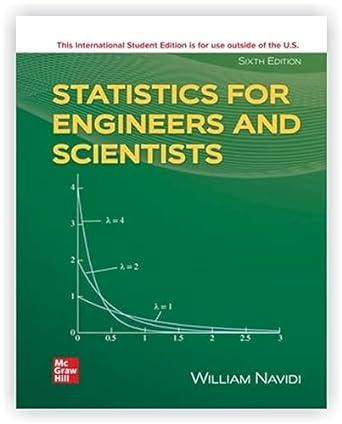The calibration of a scale is checked by weighing a standard (10 mathrm{~g}) weight 100 times. Let
Question:
The calibration of a scale is checked by weighing a standard \(10 \mathrm{~g}\) weight 100 times. Let \(\mu\) be the population mean reading on the scale, so that the scale is in calibration if \(\mu=10\). A test is made of the hypotheses \(H_{0}: \mu=10\) versus \(H_{1}: \mu eq 10\).
Consider three possible conclusions: (i) The scale is in calibration. (ii) The scale is out of calibration.
(iii) The scale might be in calibration.
a. Which of the three conclusions is best if \(H_{0}\) is rejected?
b. Which of the three conclusions is best if \(H_{0}\) is not rejected?
c. Is it possible to perform a hypothesis test in a way that makes it possible to demonstrate conclusively that the scale is in calibration? Explain.
Fantastic news! We've Found the answer you've been seeking!
Step by Step Answer:
Related Book For 

Question Posted:





